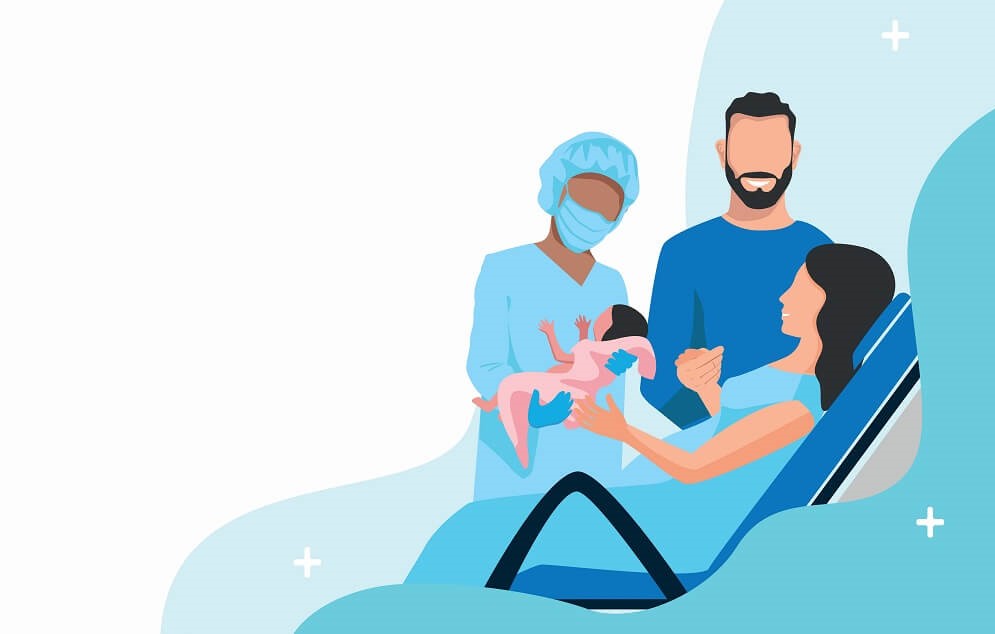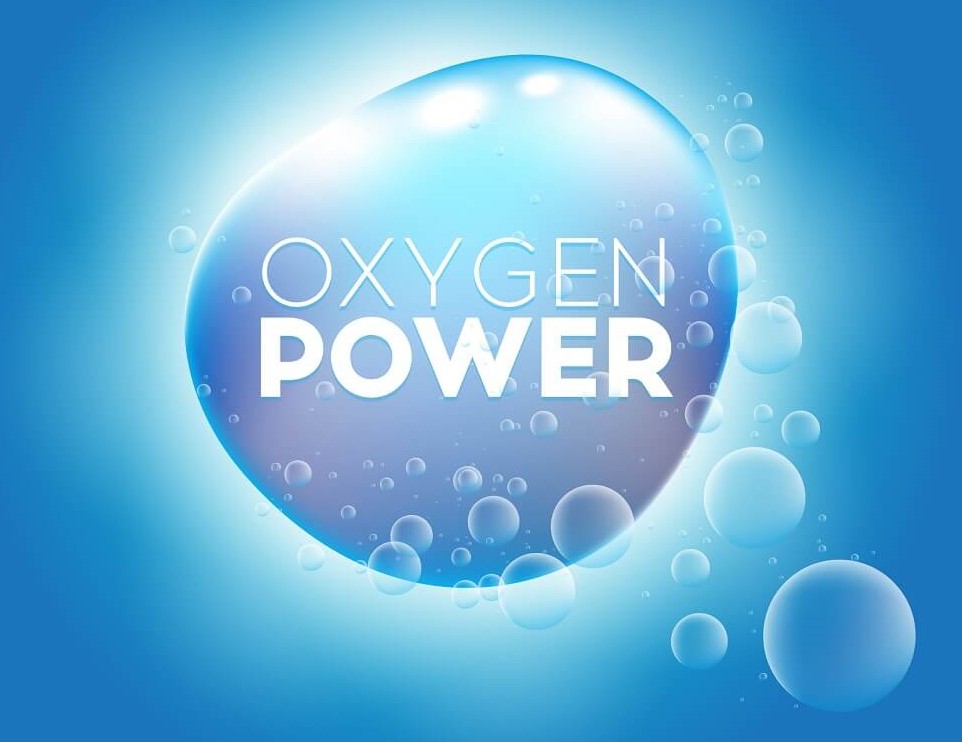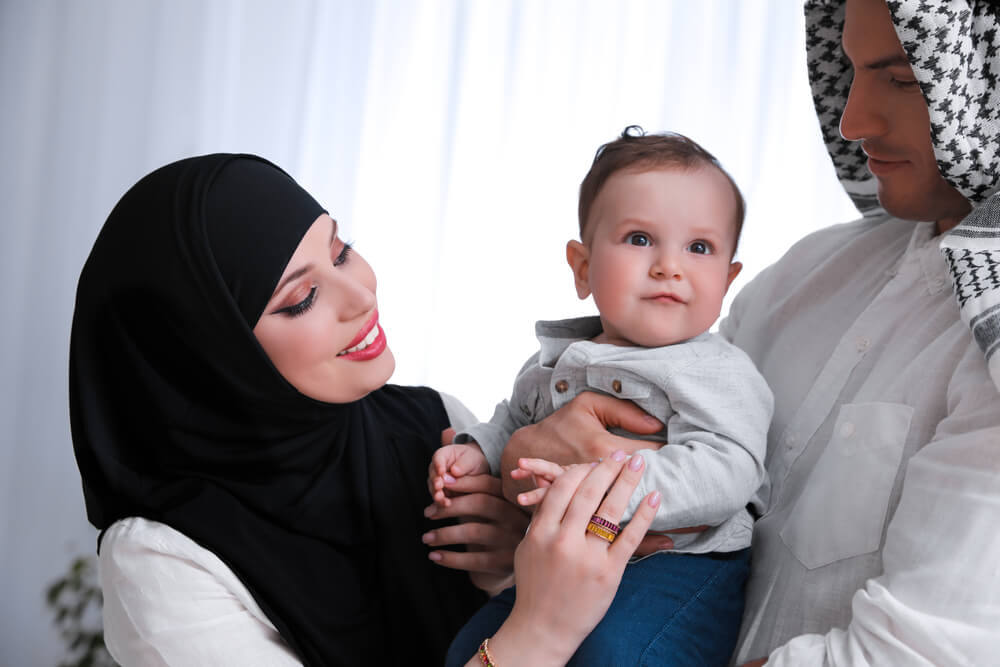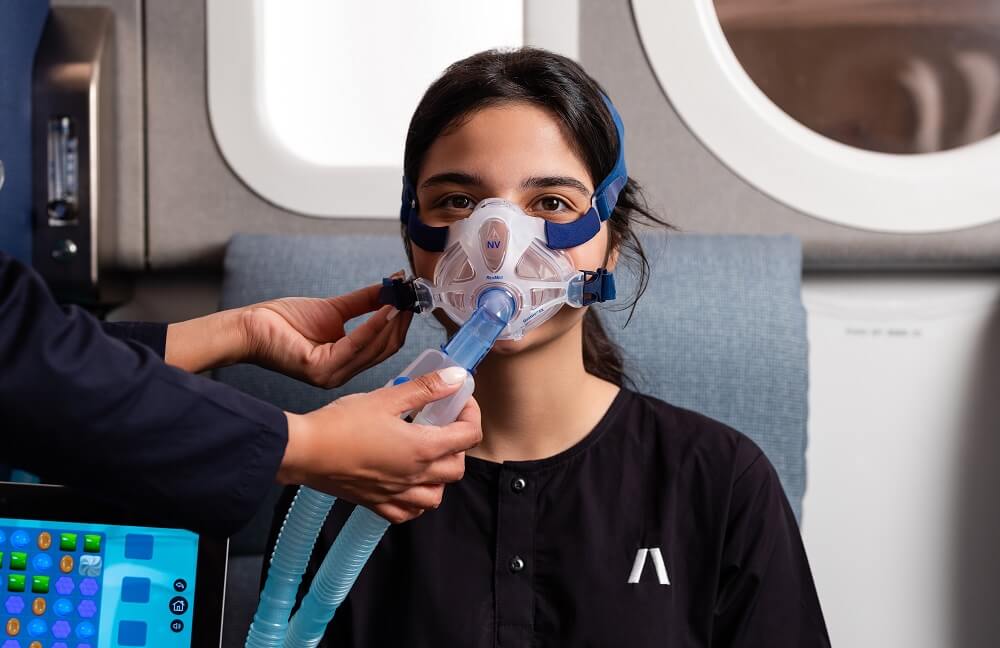Improve Your Child’s Quality of Life: Understanding the Factors that Affect Child Development
Children grow up in different environments where hereditary and environmental elements shape and mold who they are. As parents, it’s helpful to understand the risk factors that affect child development.
Recognizing a child’s unique situation will also help provide the proper support and identify potential developmental concerns and factors.
Having a better understanding of the aspects that your child is going through gives you more control over the corrective measures you can take.

Hypoxia at Birth
Hypoxia happens when you have low levels of oxygen in your body tissue. The severity of birth hypoxia symptoms depends on factors such as:
- How long the baby doesn’t have enough oxygen
- How low the oxygen level is
- How quickly your child receives the proper treatment
Hypoxia presents a broad range of symptoms and challenges that vary across children, so a thorough assessment is required to receive the proper help.
Sometimes, hypoxia can develop into neurodevelopmental disorders such as autism spectrum disorder and cerebral palsy.

Autism Spectrum Disorder (ASD)
Autism spectrum disorder is a neurodevelopmental disorder affecting the way a person:
- Communicates
- Interacts with others
- Experiences the world around them
The term “spectrum” acknowledges that autism manifests differently across individuals. Each person holds varying degrees of social communication, interaction, and behavior.
ASD Symptoms may include:
- Difficulties with social interaction (e.g., making eye contact, understanding social cues)
- Repetitive behaviors (e.g., rocking, hand-flapping)
- Challenges with verbal and nonverbal communication
- Sensory sensitivities, such as being sensitive to loud noises or certain textures
Cerebral Palsy (CP)
The most common motor disorder in childhood, cerebral palsy, encompasses conditions that impact one’s ability to move and maintain balance and posture. The severity of Cerebral Palsy symptoms varies from child to child.
They may include the following:
- Delays in reaching milestones (e.g., not being able to sit up by 8 months or not walking by 18 months)
- Fidgety or jerky movements
- Muscle spasms
- Tremors
Traumatic Brain Injury (TBI) in Children
Accidents happen during childhood. A car accident, falling off the bike, or sport injury can cause traumatic brain injury (TBI) — damage to the brain caused by a sudden blow or jolt to the head.
In the Middle East and North Africa regions, the “vast majority of reported TBI severity was mild (63.1%) compared to moderate (10.7%) and severe TBI (20.2%).”
Sometimes, the impact of TBI is only evident when parents or teachers notice changes in a child’s cognitive and emotional behaviors at home or school.
Your child may experience:
- Headaches
- Dizziness
- Lightheadedness
- Blurred vision
Infants and toddlers also experience head injuries. Identifying these injuries is especially challenging, as babies can’t tell you directly when they feel something wrong.
Signs of concussion in infants include:
- Bumps, bruises, bleeding
- Changes in balance and coordination
- Vomiting or seizures
Long-Term Impacts:
When a TBI stretches beyond the point of average recovery (1-2 months), this is called post-concussion syndrome (PCS).
When a TBI occurs, it may impact blood flow to some brain regions, which can cause symptoms like these:
- Chronic headaches
- Changes in personality
- Reduced school performance
- Memory changes
- Loss of acquired motor skills
- Sleep disruption
The emotional and behavioral symptoms children experience are often incorrectly diagnosed as other conditions.
TBI can produce behavioral shifts like anxiety and depression. A child may lose interest in activities they once enjoyed, withdraw from peers, or feel more worried or fearful than usual. Some symptoms might even be similar to Attention-Deficit / Hyperactivity Disorder (ADHD) and Autism Spectrum Disorder (ASD). A misdiagnosis can cause delays in treatment and recovery.
Healthcare providers must consider the possibility of a TBI, especially if the child is known to have had a recent head injury.
The Aviv Youth Medical Program

Rest assured, help is available for children who experience short- and long-term effects of the risk factors outlined above.
Following is an overview of how Hyperbaric Oxygen Therapy (HBOT) can help specific conditions associated with two child development risk factors:
- Cerebral palsy (CP): A study on 111 CP children found “HBOT can improve gross motor function, speech, functional skills as well as cognitive function.”
- Traumatic brain injury (TBI): Research on children ages 8-15 suffering from post-concussion syndrome found “HBOT improves both cognitive and behavioral function, PPCS [persistent post-concussion syndrome] symptoms, and quality of life in pediatric PPCS patients at the chronic stage, even years after injury.”
The Aviv Clinics Youth Assessment

No matter where your child’s development stands, receiving the proper diagnosis is essential so your child can get help for their unique needs. Child development issues require a targeted and personalized strategy.
You can be confident in seeking the care and advice of the Aviv Youth Assessment Program as you’ll have some of the world’s foremost medical professionals and scientists who can help you find answers and a solution.
Founded on scientific research, the Aviv Clinics Dubai team has been experts in offering a tailored treatment plan for children dealing with CP, TBI, PCS, and stroke.
A Bright Future Awaits You at Aviv Clinics Dubai
At DP World’s Aviv Clinics Dubai, we follow a tailored approach for the Youth Assessment, delving into genetic, neurological, and environmental factors. This enables the design of personalized treatment plans, combining Hyperbaric Oxygen Therapy (HBOT), cognitive training, physiotherapy and nutrition guidance.
Early intervention, especially for conditions like cerebral palsy, nurtures positive development and a brighter future for children.
What Is the Most Common Cause of Cerebral Palsy & Other FAQs
Occurring in about two out of every thousand births in Arabic-speaking countries, the condition known as cerebral palsy (CP) affects different brain areas responsible for voluntary movements, coordination, balance, and motor control. CP makes it difficult to perform daily activities, creating diverse challenges that vary from person to person.
While there’s no cure, understanding the causes, symptoms, and available treatments is crucial for adults and kids with cerebral palsy.
What is the most common cause of cerebral palsy, and how is it treated? Find these answers and more below.
What Is the Most Common Cause of Cerebral Palsy?

Cerebral palsy’s most common cause is a disruption in the delicate process of brain development. CP often occurs due to brain injury that affects the brain’s growth or structure. These disruptions can happen:
- Before birth (prenatal), including infections or insufficient oxygen during pregnancy
- During birth (perinatal), such as complications during the birthing process
- After birth (postnatal), including infections or accidents impacting the brain
When the brain development process is interrupted, various motor and developmental challenges can occur.
Brain damage caused by oxygen deprivation and blood flow issues during childbirth is known as HIE or Hypoxic-Ischemic Encephalopathy. This lack of oxygen can result in injury to the baby’s brain. Research shows that infants who suffer HIE are at a greater risk for “developing severe cerebral palsy.”
Can Cerebral Palsy Be Prevented?
While it’s not possible to prevent every case of cerebral palsy, careful prenatal care and safe childbirth practices significantly improve the odds. Preventing cerebral palsy focuses on minimizing risk factors and supporting a healthy pregnancy.
Regular prenatal checkups that can help detect potential problems early on are crucial during pregnancy. Ensuring safe practices during childbirth, like having skilled medical help who can monitor for issues and take timely action, can also help reduce the risk of perinatal brain injuries.
It’s important to understand that sometimes, despite best efforts, certain conditions are not preventable or happen beyond anyone’s control.
How Is Cerebral Palsy Diagnosed?
Diagnosing cerebral palsy involves professional observation and a series of tests, including typical growth and development checkups and neuroimaging techniques. These tests can also rule out other conditions that share symptoms with cerebral palsy.
Tests include:
- Growth and posture measurements
- Muscle tone assessment
- Hearing and vision tests
- Cranial ultrasound
- Magnetic resonance imaging (MRI)
- Electroencephalogram
Common symptoms can be useful to help steer practitioners toward a diagnosis. However, mild symptoms can be difficult to detect in very young kids with cerebral palsy.
A thorough Youth Assessment at DP World’s Aviv Clinics Dubai, including DNA and genome testing, can help detect issues as early as possible.
What Are the Symptoms of Cerebral Palsy?

The symptoms of cerebral palsy can show up in different ways but primarily affect movement. Each person’s experience is unique. Some may find walking challenging, while others may struggle to use their hands. Some of the common signs and symptoms may include:
- Trouble with muscle coordination
- Weakness in arms and legs
- Involuntary movements
- Muscle tone that is either too stiff or too loose
- Delays in reaching movement milestones
- Difficulty with fine motor movements
For kids with cerebral palsy, some limitations can be incredibly frustrating. It can take more time to sit up, crawl, or walk. Children with CP may “have unusual posture or favor one side of the body when they reach, crawl, or move.” Other early signs of the condition include:
- Under 6 Months: The child may show stiffness or floppiness, or their head may lag backward when lifted. Their legs may also stiffen or cross when picked up.
- Over 6 Months: The child may have difficulty bringing hands together or up to their mouth. They may not roll over and may ball one hand up while reaching with the other.
- Over 10 Months: Crawling may be uneven as the child pushes off with one hand or leg while dragging their other limbs. They may be unable to stand, even with support.
Remember that symptoms differ in severity from one child to the next. They may also appear later in life.
How Does Cerebral Palsy Affect Everyday Life and Development?

Living with cerebral palsy poses unique challenges that can affect mobility and everyday activities. Depending on the area of the brain affected, one can classify CP into different subtypes:
- Spastic Cerebral Palsy
- Dyskinetic Cerebral Palsy
- Ataxic Cerebral Palsy
- Mixed Cerebral Palsy
Depending on the CP type and severity, sitting still or walking comfortably may be challenging or require mobility devices. Some individuals can have trouble eating or speaking.
Is Cerebral Palsy a Learning Disability?
CP isn’t considered a learning disorder on its own. However, it can present cognitive challenges for some because the condition can influence parts of the brain responsible for cognitive processes.
For some, a link between cerebral palsy and cognition leads to challenges in learning and social interactions. Research shows that “children with spastic CP have a higher risk of learning disabilities and problems in peer relations.” These challenges can also exist in other subtypes but don’t appear in everyone with the condition.
How Can Cerebral Palsy Balance Exercises Help?

Cerebral palsy balance exercises can help enhance coordination, stability, and motor skills for people with the condition. Both adults and kids with cerebral palsy can engage in regular balance exercises to promote greater independence and improved quality of life.
These exercises primarily focus on improving core strength, posture, balance, and spatial awareness. Some CP balance exercises include:
- Shifting weight from one side to the other
- Standing and balancing on one leg and then the other
- Controlled, coordinated movements
- Water aerobics and activities
Some individuals with CP also turn to everyday activities and exercises to promote balance, such as playing at the playground, yoga, pilates, and gentle stretching to promote overall balance, improve body strength and awareness, and reduce the risk of falls.
What Treatment Options Are Available for Kids with Cerebral Palsy?
For kids with cerebral palsy, treatment options take different approaches, including medical interventions, physical and occupational therapy, and holistic and alternative treatments to enhance daily function.
Medical Interventions
Medical treatments aim to improve and alleviate symptoms through:
- Surgery: Selective dorsal rhizotomy (SDR) and orthopedic surgery
Physical and Occupational Therapy
Therapy aims to enhance coordination and mobility.
- Physical Therapy: Strength training, aquatic therapy, and balance training
- Occupational Therapy: Fine motor skill development, adaptive equipment training, and sensory integration therapy
Holistic and Alternative Treatments
These approaches go beyond traditional medical interventions to consider the individual’s overall well-being, such as:
- Lifestyle changes
- Hydrotherapy
- Yoga and meditation
- Massage therapy
- Cold and heat therapy
Alternative treatments also include innovative therapies that consider the building blocks of health and wellness. Therapies that target stem cells for cerebral palsy patients have resulted in “significant improvement in gross motor function.”

The Aviv Medical Program integrates evidence-based therapies, including the world’s most advanced hyperbaric oxygen therapy (HBOT) protocol, personalized physical and cognitive training, and nutritional coaching. The program’s capacity to stimulate the body’s natural healing mechanisms offers hope for improved outcomes in people living with CP, particularly those with HIE-induced conditions.
Our unique HBOT protocol, the core aspect of the Aviv Medical Program, has been shown to powerfully induce “stem cell proliferation,” which helps to multiply and increase the number of stem cells to help support neurological repair.
These developments are incredibly promising for pediatric cerebral palsy patients, who after treatment at DP World’s Aviv Clinics Dubai had seen significant improvement in their independent tasks.
Hope for Cerebral Palsy Patients at DP World’s Aviv Clinics Dubai
Cerebral palsy can be challenging to live with. Our comprehensive youth assessment aims to address the root cause of conditions like CP, delving into genetic, neurological, and environmental factors. This enables the design of personalized treatment plans, combining Hyperbaric Oxygen Therapy (HBOT), cognitive training, physiotherapy and nutrition guidance.
Sultan Ahmed Bin Sulayem, Chairman and CEO of DP World, said:
“Aviv Cares is a true testament to the commitment of DP World and Aviv Clinics Dubai to improving the quality of lives of children in the UAE. We support the clinic’s mission of making cutting-edge treatments more accessible to those in need. Investing in the well-being of our youth is a critical step toward building a stronger society. Through Aviv Cares, we aim to positively impact the lives of children and families in the UAE community.”
Learn more about cerebral palsy and how DP World’s Aviv Clinics Dubai can help.
